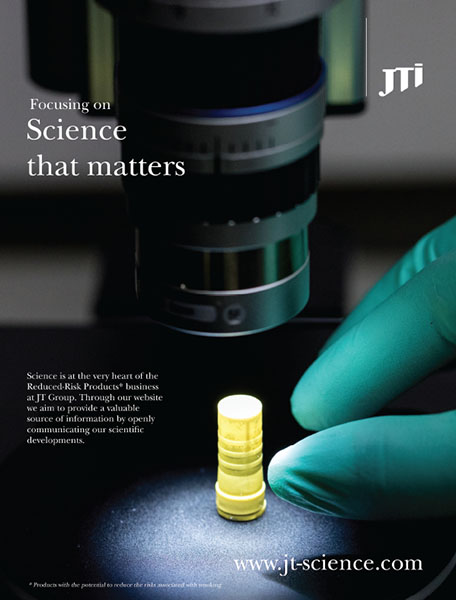
How to approach environmental assessments for the best chance of success
By Adam Bonin and Antony Jones
An Environmental Assessment (EA) is an analysis prepared in accordance with the U.S. National Environmental Policy Act (NEPA) to determine if a product’s approval would significantly affect the environment. It applies to all federal actions in the U.S., including regulations, policies, projects, licensing and permission granting. The assessments give insights into potential risks associated with a product’s manufacture, use and disposal and help manufacturers develop effective mitigation strategies to reduce or avoid possible environmental consequences.
EAs therefore help regulatory agencies identify potential adverse environmental impacts from the manufacture, use and disposal of electronic nicotine-delivery systems and oral nicotine products. They are a small yet important part of premarket tobacco product applications (PMTAs) and modified-risk tobacco product submissions. The U.S. Food and Drug Administration requires manufacturers to submit EAs for each individual tobacco product, or stock-keeping unit, within a PMTA.
An inadequate or absent EA will result in either a “refuse-to-accept” or a “refuse-to-file” order from the FDA. In 2021, the FDA rejected 4.5 million vaping applications on the grounds that they “lacked an adequate environmental assessment.” With companies spending millions on PMTA submissions, they cannot afford to miss out on approval due to such a small part of the process. So, what does a good EA look like?
What to Include in an Environmental Assessment
In general, an EA includes an executive summary, applicant details, description of the proposed action and purpose and need of the proposed action. Further EA sections include the identification of alternatives, including the proposed action and no action alternative, potential environmental impacts of the alternatives (affected environment [or existing conditions] and environmental impacts), cumulative impacts and mitigation measures. An EA is appropriate for submission if it is determined that the impacts of the proposal will not be significant or the FDA concludes a finding of no significant impact. Mitigation measures may be recommended if impacts are anticipated, to reduce them below the significance threshold.
The initial stage of the EA process is building a well-defined project description, covering the purpose and need for the regulatory decision (marketing granted order) that triggers the requirement for an EA under the NEPA. The applicant will also need to include details of product components, product formulation (where applicable) and predicted sales projections for the first and fifth years. It is particularly important to include the mass of individual metals in product hardware components (e.g., devices, pods) to assess potential impacts at the end of life.
A good EA includes a thorough screening and comprehensive modeling of product components (e.g., e-liquid ingredients), with all conclusions and results backed up with hard data. The evaluation of the potential release of materials to the environment should be quantitively assessed, with the resulting potential concentrations in the environment explicitly stated and compared with relevant ecotoxicity standards to determine the possible impact.
Throughout, it is important to appropriately manage confidential information. EAs include both confidential and nonconfidential appendices, and it is important that these are prepared correctly. For example, if there is proprietary information in the e-liquid formulation, this would be best listed in the confidential appendices, as would sales and marketing projections. It can be difficult to know which information is appropriate for inclusion in the confidential apprentices, and working with an experienced team offers the best chance of success.
Determining the Possible Impacts
E-liquids typically consist of a mixture of ingredients, including propylene glycol, vegetable glycerin and nicotine. The formulation can be screened using a predictive tool to determine which ingredients are of most ecotoxicological concern and should be carried forward into the analysis. The selected ingredients can be assessed for estimated acute and chronic aquatic toxicity for aquatic organisms, including plants, fish and invertebrates, and then be assessed in subsequent fate and transport modeling.
The EA should analyze the plausible scenarios for the impact of the identified substances being released into the environment, including quantitative release modeling. For example, this could include the possible impact of the material being released into surface water or soils at quantities considered reasonable based on predicted sales data.
The project supply chain should also be documented, including details of manufacturing and shipping to retail entities. The environmental and social resources around U.S. manufacturing facilities require characterization to provide an understanding of the affected environment (existing or baseline conditions). The potential impacts of projects can then be evaluated based on changes to the baseline conditions—for example, if chemical mixtures or raw ingredients are accidentally released into surface water or chemicals are released down the drain during manufacturing.
It is important that the EA is realistic. In our experience, the inclusion of conservative analyses appears to be the soundest approach. It may be tempting to conduct modeling for a wide variety of release scenarios, but if they are deemed unlikely by the FDA, you may receive a deficiency for evaluating unreasonable scenarios.
Tips and Tricks
- Start early. Considering the EA process early in the application can improve efficiencies, particularly for characterizing natural resources around U.S.-based facilities and engaging with manufacturers and other vendors to understand product supply chains.
- Use a robust standard operating procedure. In an EA, it is vital that every section includes explicit information that satisfactorily evaluates the product against FDA requirements.
- Choose an experienced team. Many businesses do not have employees with sufficient NEPA experience; in this case, we recommend working with a consultancy. NEPA-specific jargon and other regulatory nuances can be challenging for new practitioners.
- Stay up to date. Attending FDA and NEPA meetings can be a great way to stay up to date with any changes in the guidance. In addition, manufacturers can engage directly with an FDA project manager if they receive deficiency comments.


Broughton is a global scientific consultancy-based Contract Research Organization serving industries in pharmaceuticals, next-generation nicotine-delivery products and cannabinoids. Its team has developed a robust and proven approach for preparing defensible NEPA-compliant EAs for the FDA PMTA. For more information, visit www.broughton-group.com/us-pmta-and-mrtp-nepa-environmental-assessments-ea.

























